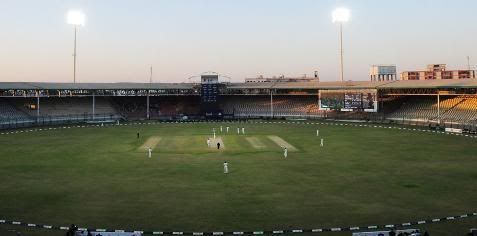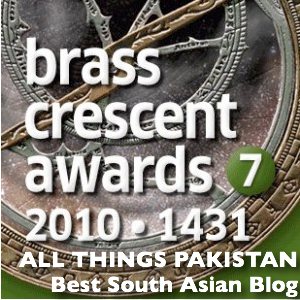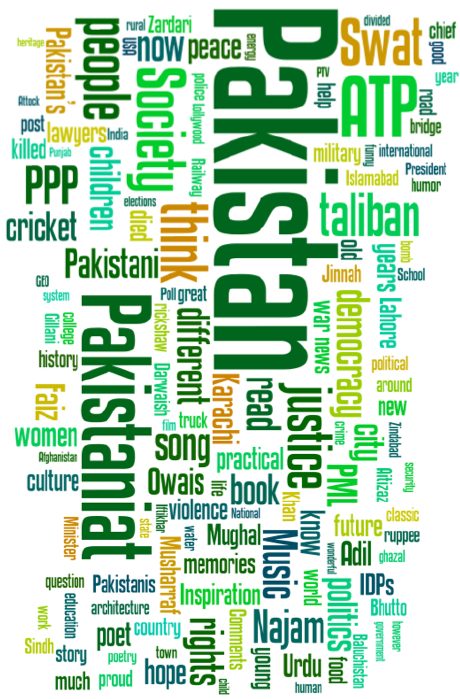In the age of big news and bigger opinions, a small news about the National Cricket title of Pakistan seems trivial. But following Pakistan’s domestic cricket has remained ATP’s tradition (See here, here, here and here). The 2010-11 National Cricket Champions title of Pakistan goes to Habib Bank today. History was made in this year’s finals as this was the first ever Flood-lit First Class Cricket Match played in Pakistan. It was also the first time that orange cricket balls with black seam were used in a first class match in Pakistan – See more on Orange Cricket Balls towards the end of this post.

Flood lights and Orange balls made this even so significant that ICC’s General Manager Operations, former South African Cricketer Dave Richardson along with Director General of PCB Javed Miandad, former Cricketers Hanif Muhammad, Wasim Akram, Moin Kan, Shoaib Mohammad and former PIA Managing Director Arif Ali Khan Abbasi watched some portions of this final in the National Stadium. Dave Richardson will later furnish his official report to ICC on the prospects of using orange balls in day/night test matches.
By conducting final as day night and offering free-entry to the stadium, PCB was hoping for a big turn out from crowd but the present law-and-order situation in Karachi kept most of the crowd away from the National Stadium.
Score Card of the Final Match can be seen here.
Remembering Gul Hameed Bhatti
Before I go further with cricket statistics of Quaid-e-Azam Cricket Trophy, I want to once again pay tribute to late Gul Hameed Bhatti who always inspired many of us to follow Pakistan’s cricket and who left us for heavenly abode in 2010. This will be the first time in my life time that I am trying to collect and write stats on domestic cricket and I don’t find any ‘curtain raiser’ piece on QEA trophy from him in National Media. Hopefully we can keep his tradition of reporting on Pakistan Cricket statistics alive at ATP.
Some Interesting Statistics of QEA Trophy
This year it was the 55th year Quaid-e-Azam trophy was played. Since its inaugural edition in 1953/54 the tournament has been played every year except for 1960 and 1971.
Surprisingly, inspite of being one of the biggest name in Pakistan’s domestic cricket this is only the second time that Habib Bank has captured the national title. Last time they won the trophy was in 1977-78.
Team Ranks for 2010-11 QeA Trophy
Division One:
1. Habib Bank Limited
2. Pakistan International Airlines
3. Rawalpindi
4. Water and Power Development Authority
5. Zarai Taraqiati Bank Limited
6. National Bank of Pakistan
7. Sialkot
8. Karachi Blues
9. Islamabad
10. Sui Northern Gas Pipelines Limited
11. Faisalabad
12. Multan
Division Two:
1. State Bank of Pakistan
2. KRL
3. Abbotabad
4. Karachi Whites
5. Lahore Ravi
6. Pakistan Television
7. Lahore Shalimar
8. Hyderabad
9. Peshawar
10. Quetta
Next year the two lowest teams from Division one viz., Faisalabad and Multan will go into Division Two whereas two top teams from Division Two viz., State Bank and KRL will get promoted to Division One.
All Time QEA Trophy Winners:
Teams from Karachi have won the tournament a record 21 times, followed by National Bank 6 times, PIA 5 times, Lahore 4 times, United Bank 4 times, Bahawalpur 3 times, Habib Bank 2 times, Sialkot 2 times, Punjab 2 times, Pakistan Railway 2 times, Faisalabad 1 time, Sui Northern Gas 1 time, Peshawar 1 time and ADBP 1 time.
All Time QEA Trophy Runners Up:
Among the runners up list, it is again Karachi with the highest number i.e. 10 times they’ve been runners up in QEA Trophy followed by Lahore, Habib Bank and United Bank who have been runners up 5 times each. They are followed by Pakistan Railway 4 times, Sindh, Pakistan Combined Services, National Bank and PIA 3 times each, Punjab, Peshawar, KRL, Sialkot and Faisalabad 2 times each and PWD, Punjab University, Bahawalpur and Sargodha 1 time each.
Quaid-e-Azam Trophy Trivia:
Following trivia is a re-write from my post on QEA Trophy in 2007
(1) Bahawalpur’s Cricket heritage and Quaid-e-Azam Trophy:
Few people today know about Bahawalpur’s glorious past as a major cricket center of Pakistan. It has the honors of winning the Pakistan’s National Cricket Champion title 2 times in 1953-54 and 1957-58. Infact Bahawalpur won the inaugural Quaid-e-Azam trophy in 1953. Nawab of Bahawalpur patronized cricket in the princely state of Bahawalpur and the state team hired talented players from Karachi and other areas of Punjab. I was surprised to see big Pakistan national team names of 1950s like Hanif Mohammad, Wazir Mohammad, Khan Mohammad, Alimuddin, Maqsood Ahmed etc playing for Bahawalpur. Take a look at these big shots of Pakistan cricket in the score card of 1953 Quaid-e-Azam trophy final which was played between Bahawalpur and Punjab
(2) When Hanif Mohammad scored 499 runs in a Quaid-e-Azam Trophy Match: Fortunes took a turn for Bahawalpur in 1958-59 QEA trophy when they faced Karachi in the Semi Finals. This year Hanif Mohammad was playing for Karachi instead of Bahawalpur and scored 499 runs after batting for 10 hours and 36 minutes. He also scored 64 boundaries. This remained a World Record for highest individual score by a batsman for 36 years. Three brothers Wazir Mohammad, Hanif Mohammad and Mushtaq Mohammad represented Karachi in this match. Score card of this historic Quaid-e-Azam trophy match is here. Brian Lara broke Hanif Mohammad‘s record in 1994 by scoring 501 notout
(3) Pir Pagaro in a QeA Trophy Match:
The famous politician and the spiritual leader of Hurs, Pir of Pagaro, Shah Mardan Shah captained Sindh’s Cricket team in QEA trophy of 1953 against Bahawalpur. This was Pir Pagara’s first and the last first class match. Take a look at the score card of this match here. He scored 1 and 15 runs in the two innings of the match and did not bowl.
Year-by-Year Tabulation of QeA Trophy Winners and Runners Up:
Following table gives the complete listing of years the tournament has been played and the winners and runners up of every year.
1. 1953/54: Bahawalpur (1st) and Punjab (2nd)
2. 1954/55: Karachi (1st) and Pakistan Combined Services (2nd)
3. 1956/57: Punjab (1st) and Karachi Whites (2nd)
4. 1957/58: Bahawalpur (1st) and Karachi C (2nd)
5. 1958/59: Karachi (1st) and Pakistan Combined Services (2nd)
6. 1959/60: Karachi (1st) and Lahore (2nd)
7. 1961/62: Karachi Blues (1st) and Paki Combined Services (2nd)
8. 1962/63: Karachi A (1st) and Karachi B (2nd)
9. 1963/64: Karachi Blues (1st) and Karachi Whites (2nd)
10. 1964/65: Karachi Blues (1st) and Lahore (2nd)
11. 1965/66: Karachi Blues (1st) and Lahore Greens (2nd)
12. 1966/67: Karachi (1st) and Pakistan Railways (2nd)
13. 1967/68: Karachi (1st) and Pakistan Railways (2nd)
14. 1968/69: Lahore (1st) and Karachi (2nd)
15. 1969/70: PIA (1st) and PWD (2nd)
16. 1970/71: Karachi Blues (1st) and Punjab University (2nd)
17. 1972/73: Pakistan Railways (1st) and Sind (2nd)
18. 1973/74: Pakistan Railways (1st) and Sind (2nd)
19. 1974/75: Punjab A (1st) and Sind A (2nd)
20. 1975/76: National Bank (1st) and Punjab A (2nd)
21. 1976/77: United Bank (1st) and National Bank (2nd)
22. 1977/78: Habib Bank (1st) and National Bank (2nd)
23. 1978/79: National Bank (1st) and Habib Bank (2nd)
24. 1979/80: National Bank (1st) and PIA (2nd)
25. 1980/81: United Bank (1st) and PIA (2nd)
26. 1981/82: National Bank (1st) and United Bank (2nd)
27. 1982/83: United Bank (1st) and National Bank (2nd)
28. 1983/84: National Bank (1st) and United Bank (2nd)
29. 1984/85: United Bank (1st) and Pakistan Railways (2nd)
30. 1985/86: Karachi (1st) and Pakistan Railways (2nd)
31. 1986/87: National Bank (1st) and United Bank (2nd)
32. 1987/88: PIA (1st) and United Bank (2nd)
33. 1988/89: ADBP (1st) and Habib Bank (2nd)
34. 1989/90: PIA (1st) and United Bank (2nd)
35. 1990/91: Karachi Whites (1st) and Bahawalpur (2nd)
36. 1991/92: Karachi Whites (1st) and Lahore (2nd)
37. 1992/93: Karachi Whites (1st) and Sargodha (2nd)
38. 1993/94: Lahore (1st) and Karachi Whites (2nd)
39. 1994/95: Karachi Blues (1st) and Lahore (2nd)
40. 1995/96: Karachi Blues (1st) and Karachi Whites (2nd)
41. 1996/97: Lahore (1st) and Karachi Whites (2nd)
42. 1997/98: Karachi Blues (1st) and Peshawar (2nd)
43. 1998/99: Peshawar (1st) and Karachi Whites (2nd)
44. 1999/00: PIA (1st) and Habib Bank (2nd)
45. 2000/01: Lahore Blues (1st) and Karachi Whites (2nd)
46. 2001/02: Karachi Whites (1st) and Peshawar (2nd)
47. 2002/03: PIA (1st) and KRL (2nd)
48. 2003/04: Faisalabad (1st) and Sialkot (2nd)
49. 2004/05: Peshawar (1st) and Faisalabad (2nd)
50. 2005/06: Sialkot (1st) and Faisalabad (2nd)
51. 2006/07: Karachi Urban (1st) and Sialkot (2nd)
52. 2007/08: Sui Northern Gas (1st) and Habib Bank (2nd)
53. 2008/09: Sialkot (1st) and KRL (2nd)
54. 2009/10: Karachi Blues (1st) and Habib Bank Ltd (2nd)
55: 2010/11: Habib Bank (1st) and PIA (2nd)
More on the orange ball used in the QEA 2010-11 Final
by Aqil Sajjad:
The colour of the ball has to do with the fact that this was a day/night match. Since red is hard to see at night, day/night cricket cannot be played with a standard red ball. It is for this reason that white balls are used for one day and T-20 matches under lights. However, the problem is that we do not have any effective leather dying technique for making white balls that can last long enough for a test match. In fact, the colour of a white ball wears out so quickly that it creates visibility issues even in a 50 overs match. For this reason, some one day international matches in the past were played with two white balls per innings (one used from each end). In 2007, a new rule was introduced under which the (white) ball is always replaced at the start of the 35th over (of a one day international) by an old but cleaner looking ball. So there we have it; if the white ball poses such problems for a 50 over match, how can it be used in test cricket where we need the ball to last for more than 80 overs?
To get around this problem, the Australians tried yellow and orange balls in their domestic cricket in the 1990s, but the results were not fully satisfactory. In recent years, there has been a renewed interest in trying balls with different colours, especially pink and orange, to make day/night test cricket a reality. The most high profile experiment with pink balls was a match between MCC and Durham at Abu Dhabi .
Pakistan’s experiment comes in this backdrop. The PCB was initially planning to try a pink ball, but then orange was also suggested. Eventually the two teams in the Quaid-e-Azam trophy final mutually agreed to play with orange balls. The balls used in this match were made in Pakistan and have extra lacquer. The seem is black and the sightscreens are also black. The PCB has also tried an orange ball in domestic T-20 in Pakistan, but it is not clear if the ball being currently used in the Quaid-e-Azam trophy final is the same one or something slightly
different.
The final of the Quaid-e-Azam trophy lasted for five days without any instance of unusual behaviour from the ball or any complaints from players so far, and the PCB is expected to continue with such experiments in the future.



















































great article, i really like to read about pakistani circket ,
very nice and i hope that every one will like this and and keep it up
It was a new experienced in the Cricket History, which was very successful, but it was very strange to play, according to my thought it is not successable in International Cricket.